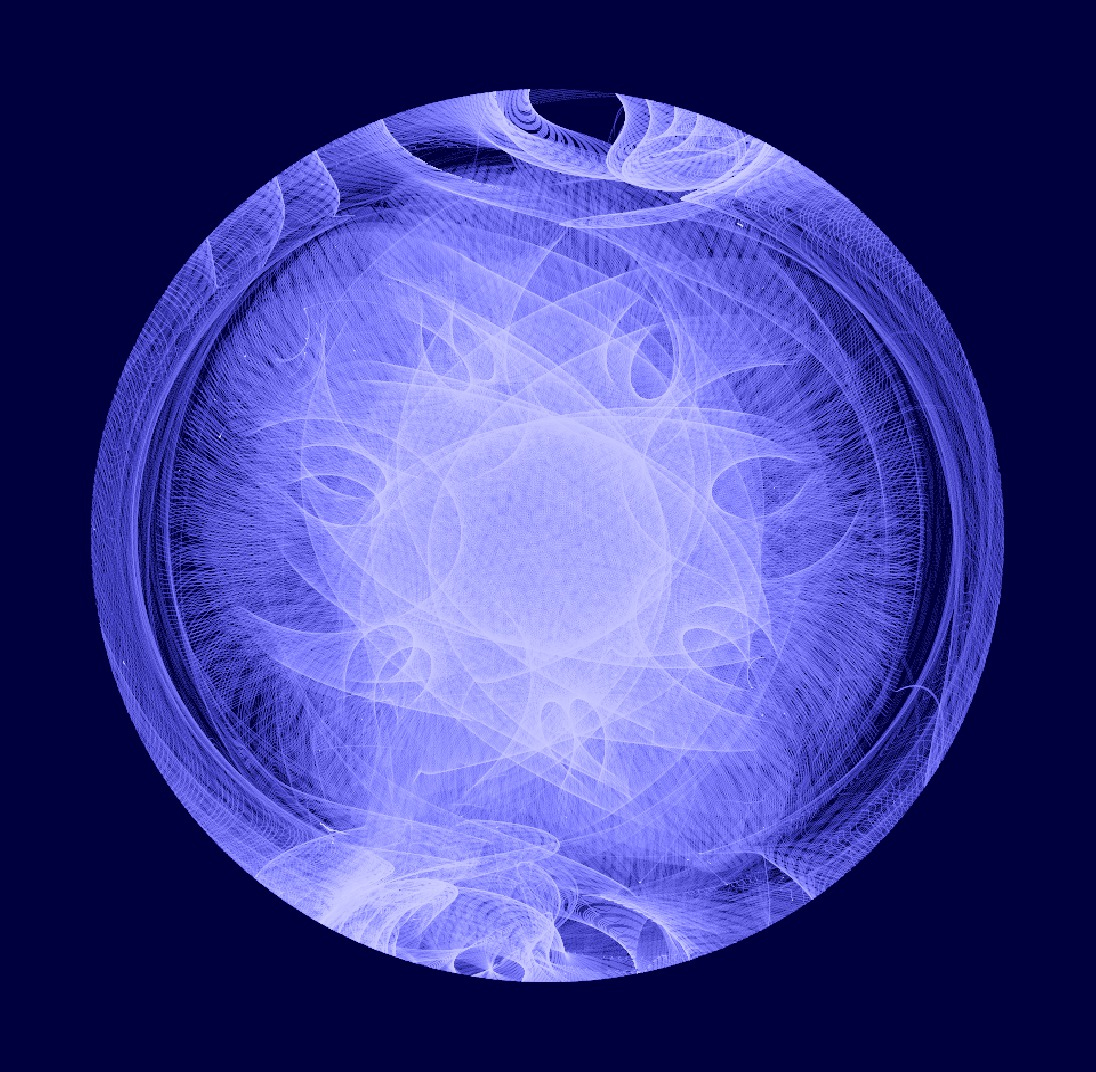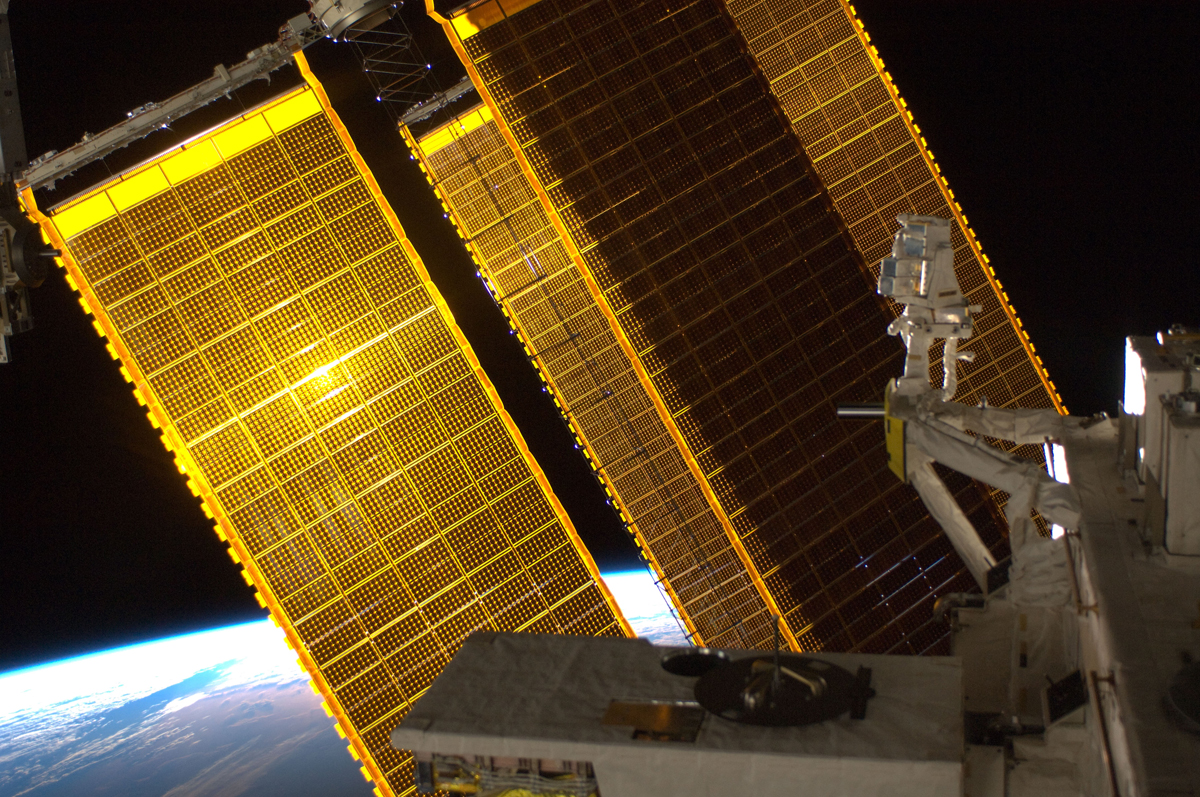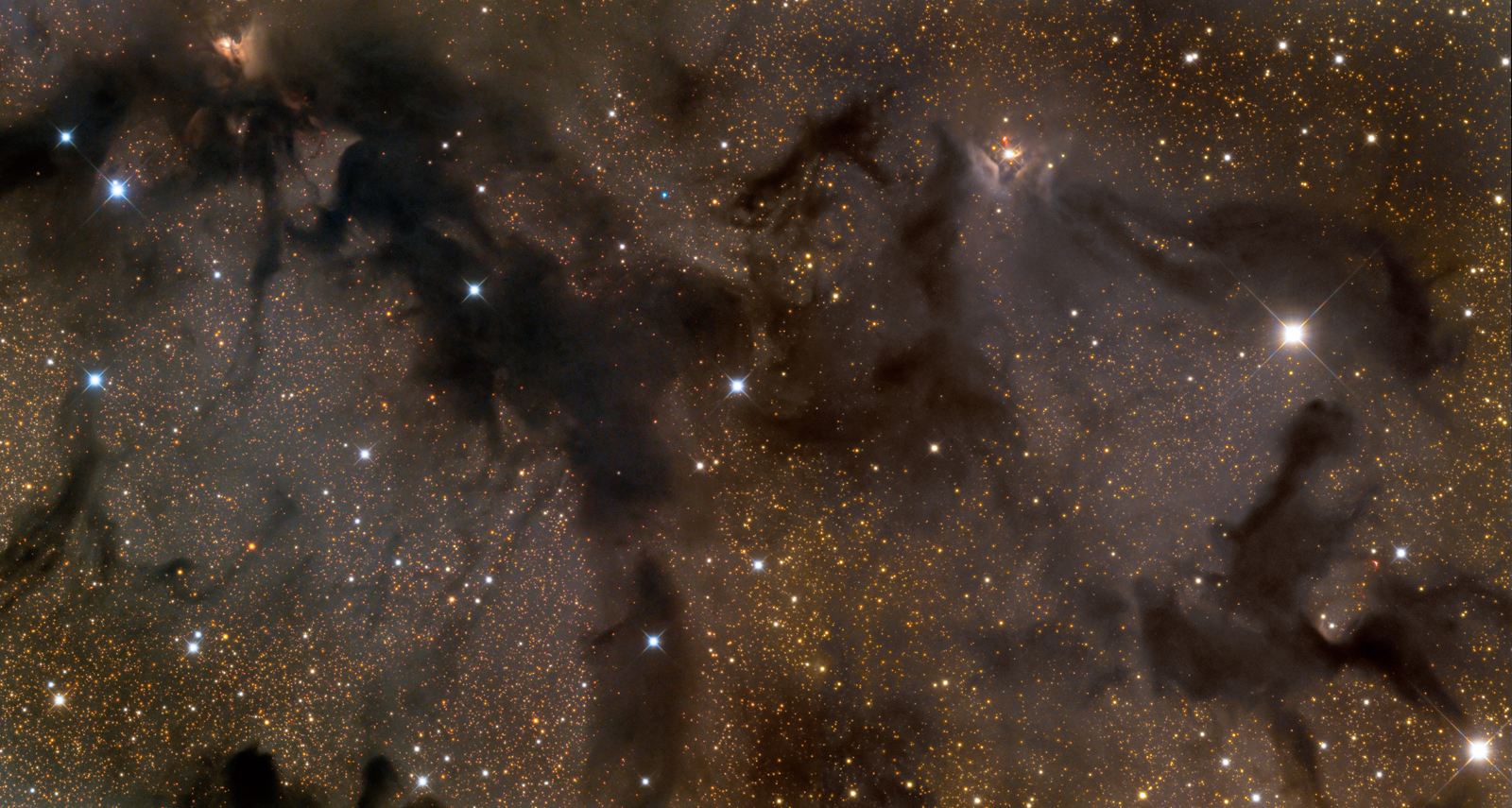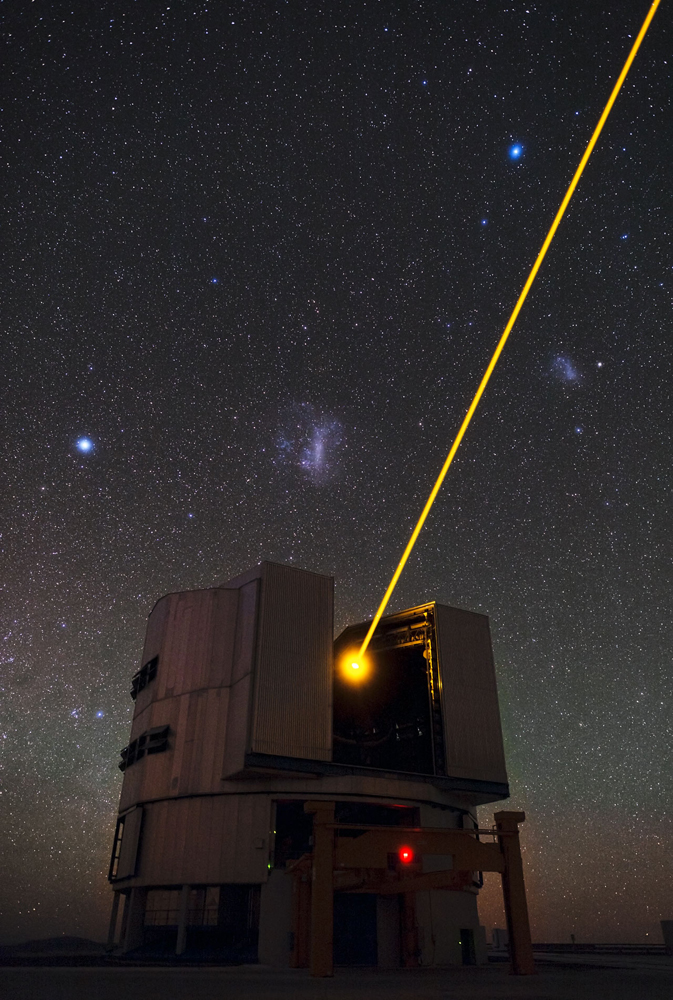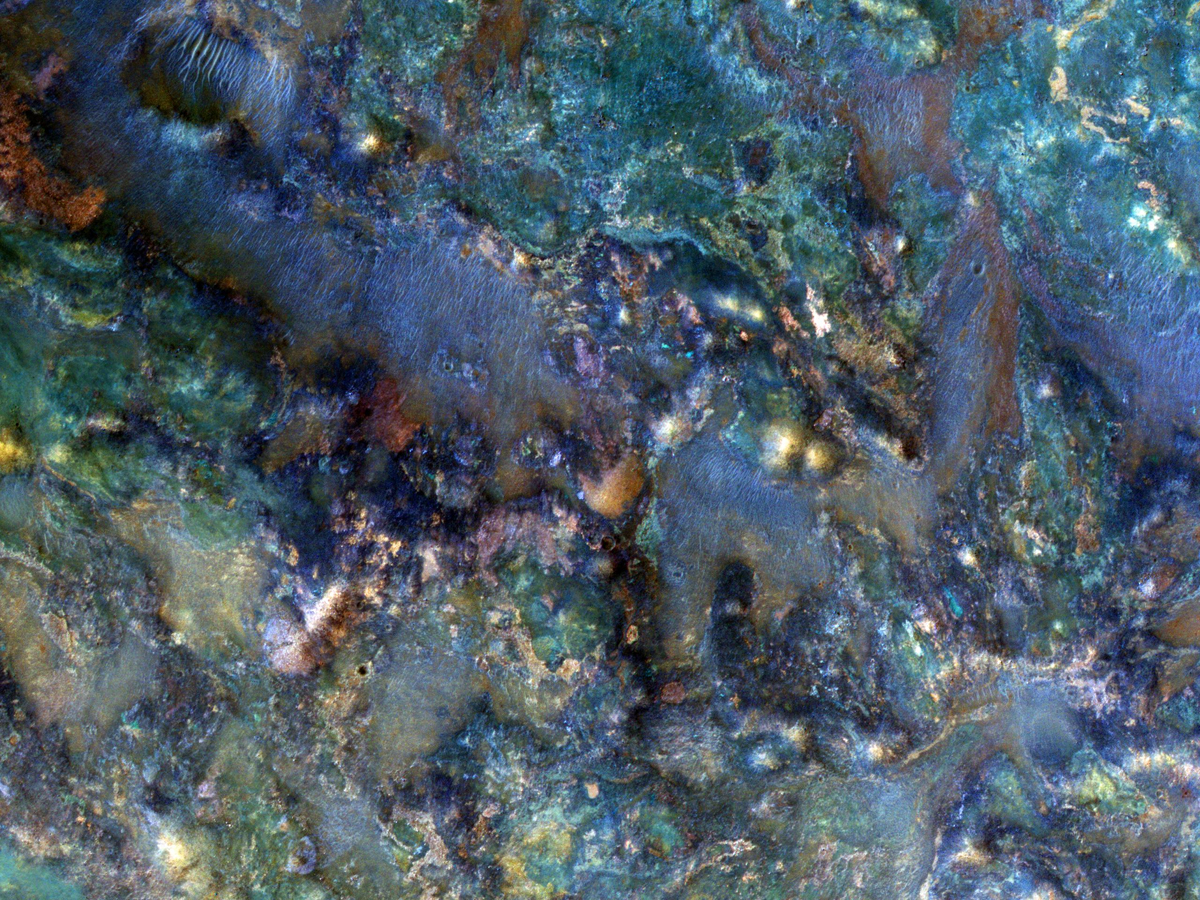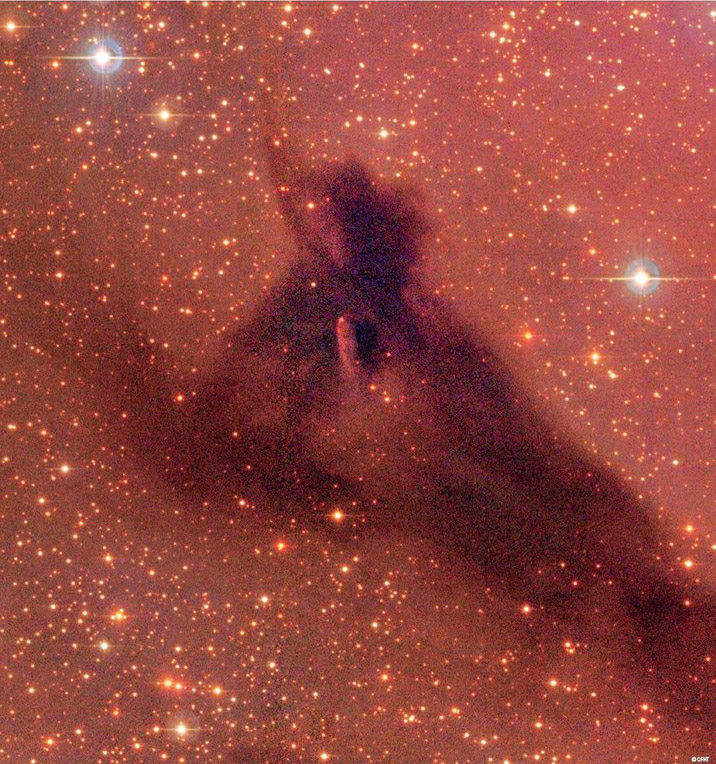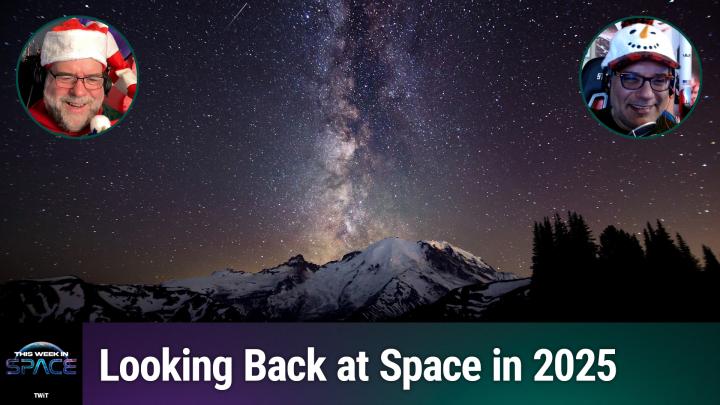Image of the Day: June 2012
The Stars Surround You
Monday, June 18, 2012: This amazing image seems to show the Milky Way streaming down not once, but twice, at ESO's Very Large Telescope on Chile's Cerro Paranal mountain. Actually, the photo shows a 360-degree panorama of the sky, so the two streams of stars are two halves of the band of the Milky Way arcing across the sky.
— Tom Chao
How Delicate the Tracery of Her Fine Lines
Tuesday, June 19, 2012: Fermi Gamma-Ray Space Telescope re-orients itself as it orbits the earth each 95 minutes, and also the axis of its orbit precesses (like a spinning top). Over time, the path of the Vela Pulsar traced by Fermi's complex movements stretches and twists into this delicate tracery. The image, centered of the Fermi's Large Area Telescope central view, shows Vela's position from August 2008 to August 2010. Vela Pulsar is a neutron star that spins 11 times a second, the brightest persistent source of gamma-rays in the sky.
— Tom Chao
Give Me the Warm Power of the Sun
Wednesday, June 20, 2012: An Expedition 31 crew member on the International Space Station photographed the solar array panels of the station. Earth's horizon and the blackness of space are visible beyond. Photo taken June 2, 2012.
— Tom Chao
Dark Was the Nebula
Thursday, June 21, 2012: Adam Block of the Mount Lemmon SkyCenter took this photo of LDN 673, a dark nebula in the constellation Aquila, in April and May 2012.
— Tom Chao
That Wave
Friday, June 22, 2012: This intriguing kinetic scupture hangs in the rotunda of Chabot Space & Science Center in Oakland, CA. Created by artist Reuben Margolin, the cardboard tubes of "Hexagonal Wave" slowly ripple outward in concentric circles, demonstrating how a wave propagates through space. For more information, including a video, visit Margolin’s site. Photo dated January 20, 2012.
— Tom Chao
A Big White Cloud Looking Right Down on Me
Monday, June 25, 2012: Astronaut André Kuipers took this photo from the International Space Station showing the Large Magellanic Cloud above the Earth. The LMC is a galaxy relatively close to our own Milky Way galaxy. Photo dated June 15, 2012.
— Tom Chao
Lock on Target and Prepare to Fire
Tuesday, June 26, 2012: Yepun, a Unit Telescope of ESO’s Very Large Telescope, shoots a yellow laser beam into the sky. The beam creates a glowing spot — an artificial star — in the Earth’s atmosphere. Astronomers then use the Laser Guide Star to control the telescope’s deformable mirrors and remove the effects of atmospheric distortions, producing images almost as sharp as if the telescope were in space. The image also captures the Large and Small Magellanic Clouds, nearby irregular dwarf galaxies, to the left and to the right of the laser beam, respectively.
— Tom Chao
Breaking space news, the latest updates on rocket launches, skywatching events and more!
All the Colors
Wednesday, June 27, 2012: Mars Reconnaissance Orbiter's HiRISE camera captured this image of a region of Mars near Nili Fossae. Part of the ejecta from an impact crater is visible here. The impact broke up diverse rock types, mixing them together in a impressionistic swirl of colors, each representing a different type of rock. The enhanced-color image was obtained in March 2012.
— Tom Chao
Shine On You Crazy Noctilucent Clouds
Thursday, June 28, 2012: Polar mesospheric clouds form between 47 to 53 miles (76 to 85 kilometers) above the Earth. The sun can illuminate these high clouds even when it is below the horizon, giving them the names of noctilucent or "night-shining" clouds. The crew of the ISS took this photo of polar mesospheric clouds on June 13, 2012, while flying over the Tibetan Plateau. Earlier on June 5, the crew made a time-lapse image sequence of polar mesospheric clouds, the first ever taken from orbit.
— Tom Chao
Obscured by Cloud
Friday, June 29, 2012: Dark nebula Barnard 169 floats between us and background stars in our Milky Way galaxy. Dense gas and dust in the nebula absorbs and scatters most starlight. Only the brightest stars can shine through. The nebula lies in the constellation of Cepheus. Image released June 2012.
— Tom Chao

Space.com is the premier source of space exploration, innovation and astronomy news, chronicling (and celebrating) humanity's ongoing expansion across the final frontier. Originally founded in 1999, Space.com is, and always has been, the passion of writers and editors who are space fans and also trained journalists. Our current news team consists of Editor-in-Chief Tariq Malik; Editor Hanneke Weitering, Senior Space Writer Mike Wall; Senior Writer Meghan Bartels; Senior Writer Chelsea Gohd, Senior Writer Tereza Pultarova and Staff Writer Alexander Cox, focusing on e-commerce. Senior Producer Steve Spaleta oversees our space videos, with Diana Whitcroft as our Social Media Editor.

